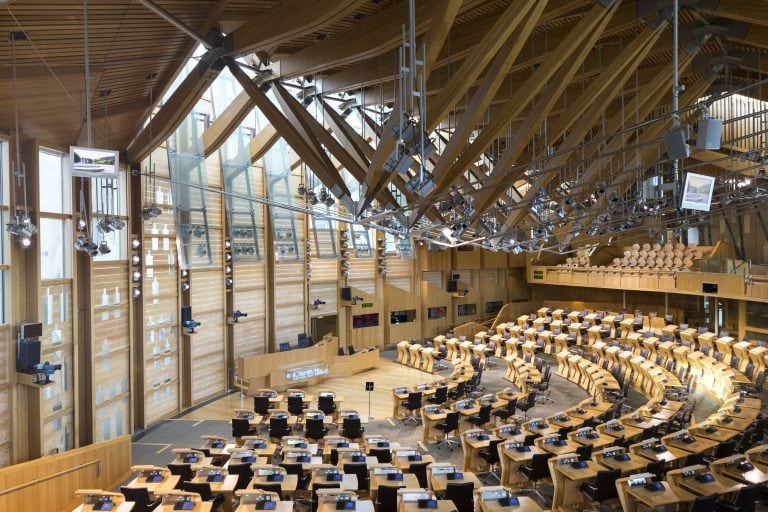Biodiversity net gain springs into 2019

A shining light came out of our Government, amidst it’s endless Brexit chaos, when Philip Hammond announced in the Spring Statement that biodiversity net gain will be mandated for all new developments in England, within the upcoming Environment Bill.
For some developers this announcement might insight panic, particularly for those who have had their head in the sand when it comes to taking a shared responsibility for the continual decline of UK wildlife. However, for others who are already taking a proactive stance this comes as fantastic news because aside from the obvious benefits for wildlife it will create a more level playing field. Indeed, just the week before, 23 of UKGBC’s largest and most influential members signed an open letter to the Government, urging them to use the upcoming Environment Bill to set legally binding targets for the achievement of environmental objectives.
It is fitting that just a few weeks before, UKGBC held its first course in a series on biodiversity net gain, with guest speakers Mike Waite from Surrey Wildlife Trust, and Tom Butterworth and Laura Homfray from WSP.
Mike provided a comprehensive overview of the road leading to biodiversity net gain and the priorities for action. Tom and Laura followed this up by highlighting the business case, the process, the barriers and solutions as well as a workshop on designing a site for biodiversity net gain.
Tom’s key lessons leant from experience implementing net gain:
- Getting in early – build it in from the start, assess early
- Inform design – use the assessment to inform design
- Integrated design – integrated delivery into what is already required
- Engage early – to understand what the stakeholders want
- Use the costs to avoid risk – understand the costs in relation to the risks avoided
- Pass on responsibility – pass the management of the site onto a third party
During the course the audience gave their perspective on what barriers exist to achieve biodiversity net gain. The most agreed upon barrier, which we can be reasonably confident will be shortly alleviated, was a lack of government policy. Whilst that’s one barrier ducked, developers will have an obstacle course of other challenges to negotiate on their route to this target. This includes a skills shortage and a lack of space onsite. Overcoming both of these will require a combination of more education, awareness raising and innovation.
Tom provides his insight on what lies beyond the updated Environment Bill
That developers will be required to deliver a net gain for biodiversity is really good news. We have been working with developers for several years demonstrating that delivering net gains for biodiversity through development is not only possible, but it is desirable for the developer as well as for wildlife. Setting a clear requirement that can be consistently applied across the country creates a level playing field for all developers, and by setting this across England it means that we know what is required from the development at the outset.
To support this, we need to help local authorities and developers better understand what biodiversity net gain means for them and how to turn what could be considered another burden into an opportunity. If managed well, delivering biodiversity net gain provides opportunities for engagement with stakeholders and the local community, opportunities for the developers to avoid risks to their projects and opportunities to enhance the places we live and work within.
To make the most of this opportunity we encourage building biodiversity net gain into the project from the outset, using the information on biodiversity to inform design and engaging the local authority and other relevant stakeholders early. Running biodiversity assessments and delivering biodiversity net gain does come with a cost but those costs can be used to decrease other project risks and to make the most of opportunities to deliver multiple benefits from green spaces, such as providing recreational space as well as improving biodiversity.
Making net gains for biodiversity mandatory for all new developments in England could lead to significant benefits for developers and the people affected by the development as well as wildlife. We are yet to see the detail of the proposal, but this is a great step in the right direction.
UKGBC next steps
In the next few years we can expect to see biodiversity net gain become mandated for new developments in England, the industry will need to quickly adapt its approach to successfully meet this requirement.
As such, UKGBC’s next steps here will be to continue to push policy, produce practical resources and educational courses. In November this year we will be holding a masterclass on biodiversity net gain to help prepare the industry. In May we will launch our educational Course Mail series on nature and biodiversity in the built environment, you will be able to register on our Course Mail page in the coming weeks.
We are looking to progress the industry’s understanding of what success looks like, if you have any green infrastructure case studies please email them to robert.winch@ukgbc.org
See our biodiversity net gain actor and resource map here
See our report ‘Insights into Nature and Biodiversity’ here
Related
Biodiversity Net Gain: Are you ready for the incoming legislation?

COP15 and rethinking nature on new developments

UKGBC announces an expanded Solutions and Innovation Advisory Scheme

UKGBC responds to the Scottish Government’s announcement that the 2030 climate target will be scrapped

